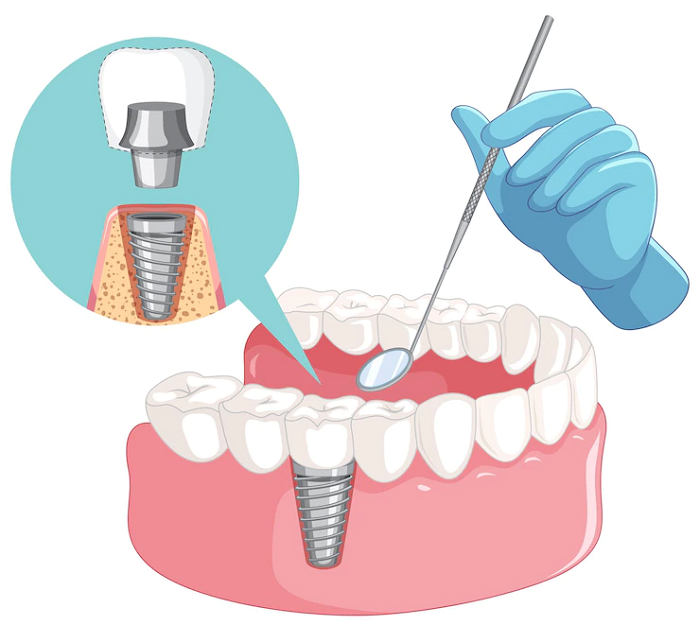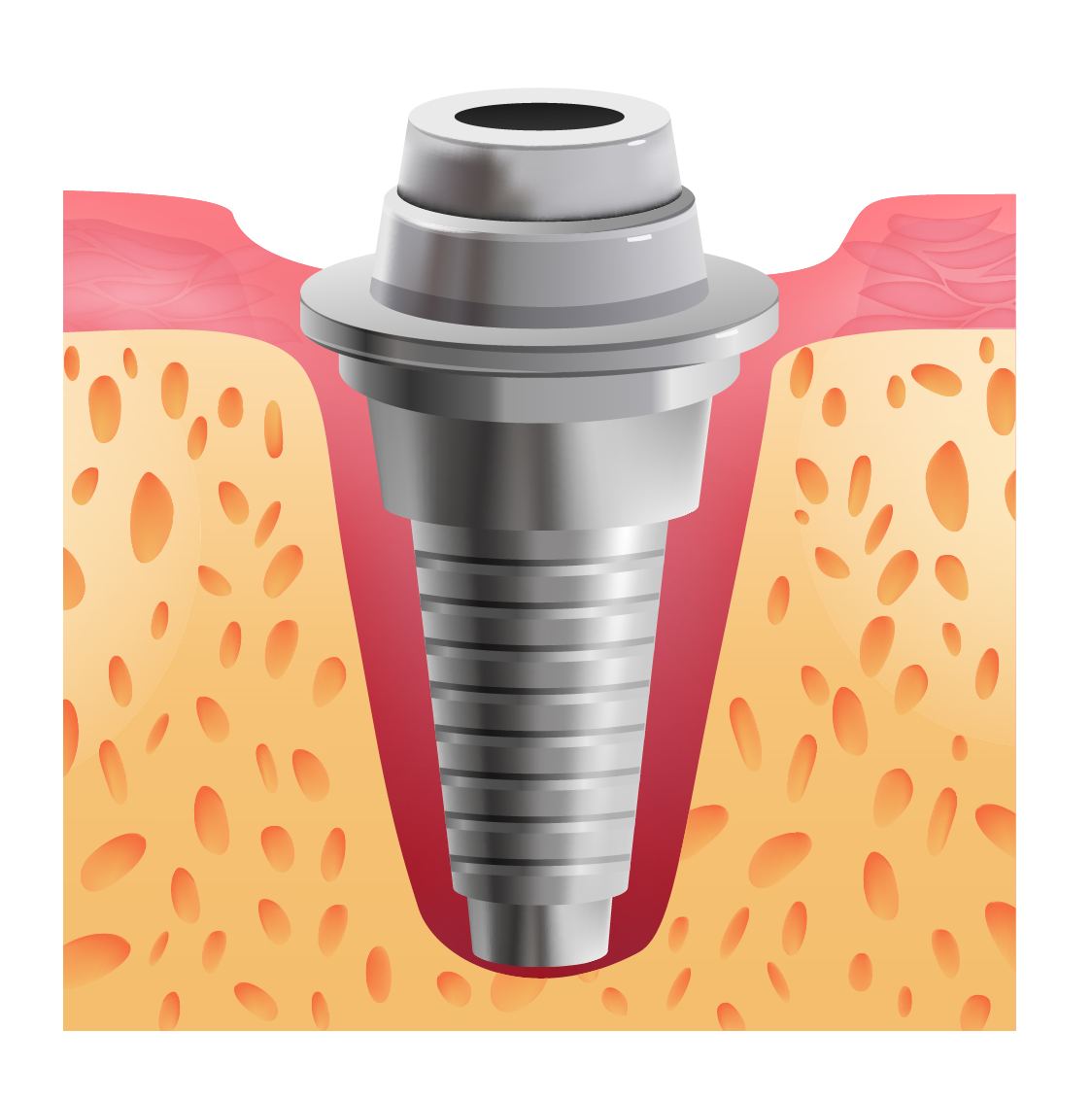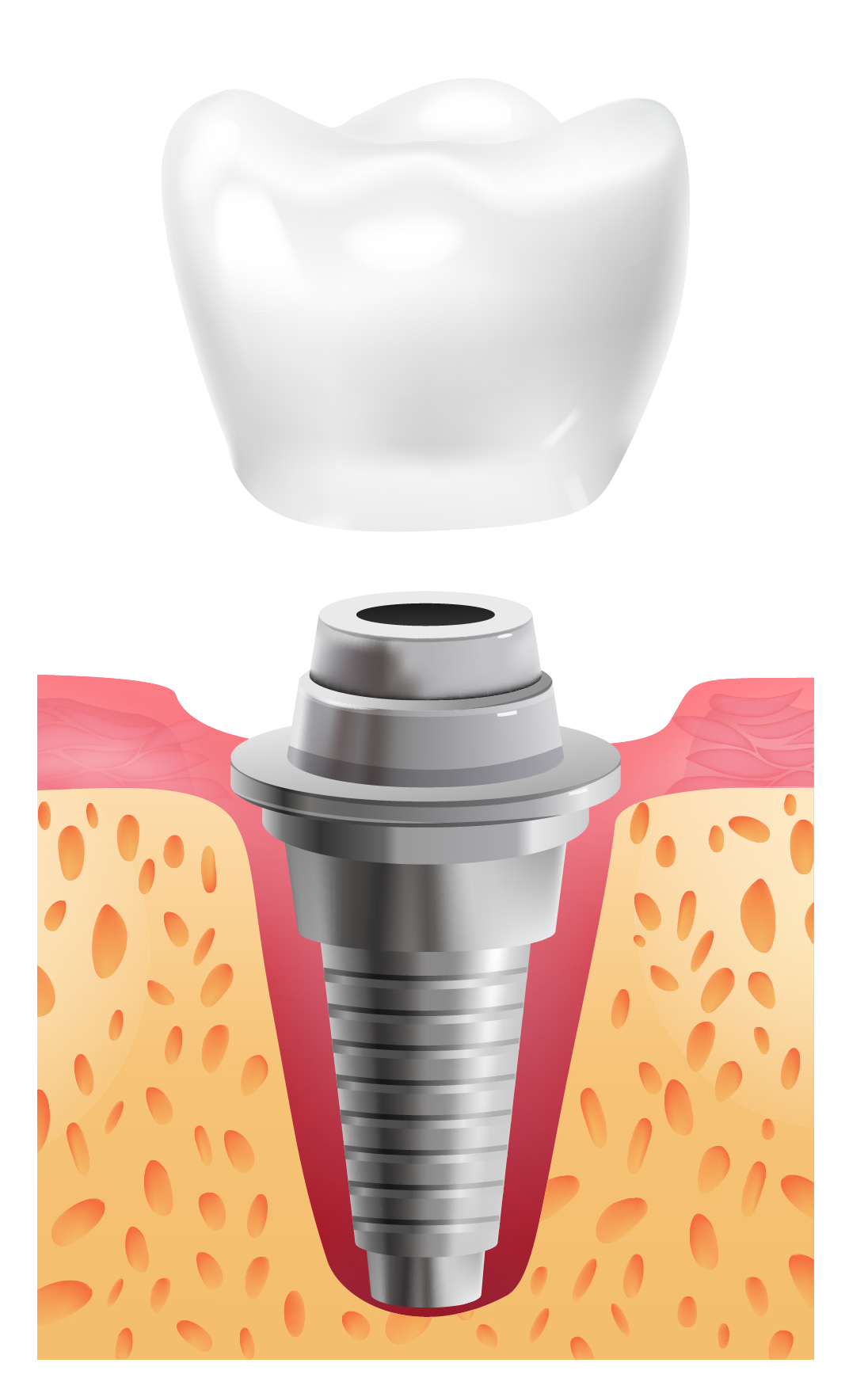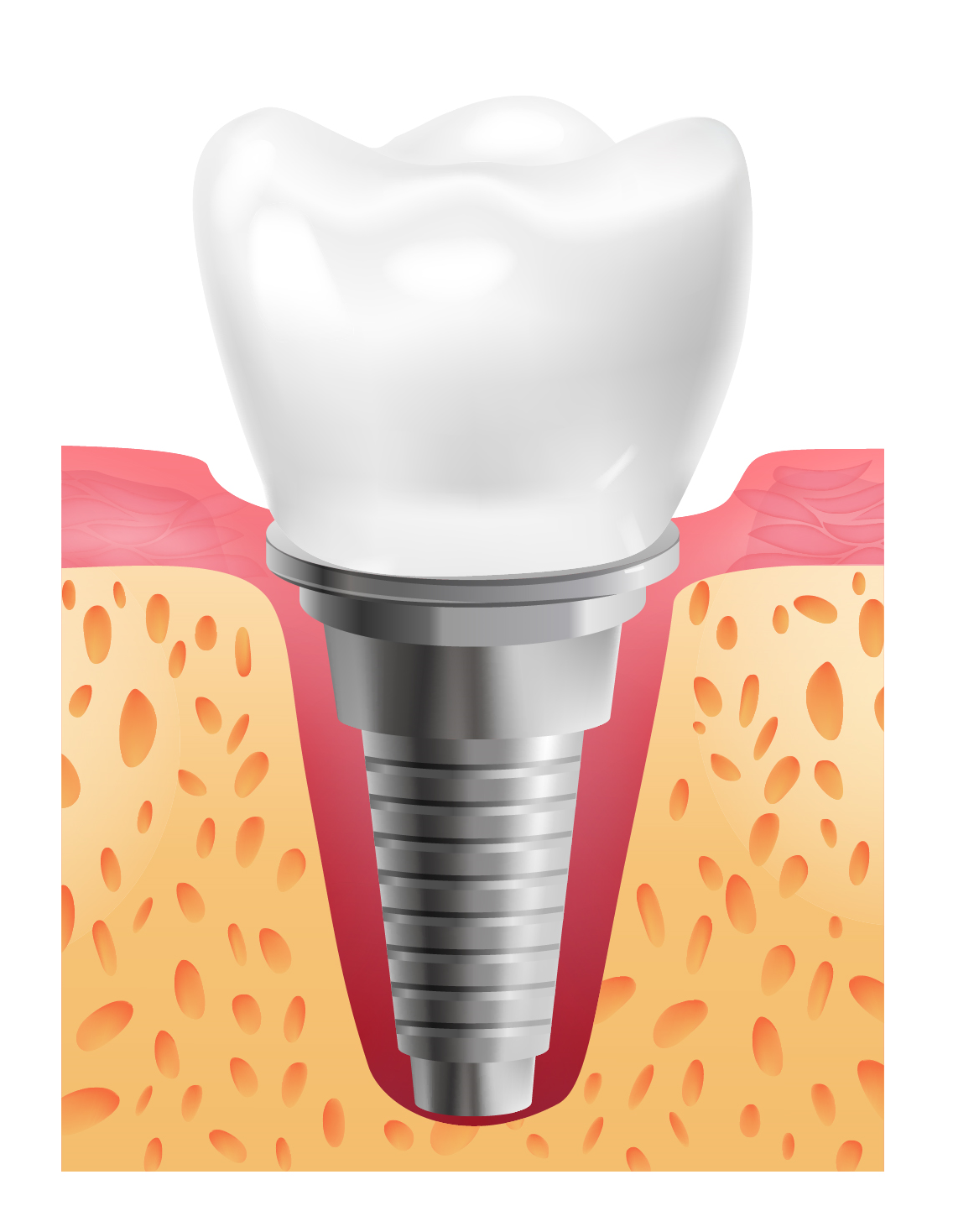

Dental implants are artificial tooth roots that are used to hold in place a replacement tooth or teeth for one or more missing teeth. They stop or stop the jaw bone from falling out. The implantation procedure is both a type of prosthetic dentistry (artificial replacement) and a type of cosmetic dentistry.
People who have lost teeth may not be able to smile or talk because they feel too self-conscious. Losing teeth can also make it hard to bite properly, which can lead to bad eating habits and health problems like malnutrition.
Dental implants give people the strength and stability they need to eat all the foods they like without having to work hard to chew. They do this by putting in new roots for teeth that are missing. Also, they help keep the jaw bone strong and healthy by stimulating and maintaining it. This stops bone loss and keeps facial features strong.
Loss of Teeth
Why do teeth fall out?
Loss of teeth
Root canal failure
Gum disease (Periodontitis)
Mishaps in the mouth (tooth injury)
Too much use and tear
Congenital defects
Find out if implants are right for you by talking to your dentist, oral surgeon, periodontist, or prosthodontist. During this appointment, your dentist will look closely at your teeth and gums and measure how much bone you have and how dense it is. This may include X-rays and computerised tomography (CT) scans to make sure there is enough bone structure for the implant(s) and to figure out where they should go.
Your dentist will tell you which treatment plan is best for you based on the condition of your oral tissues, how well you take care of your mouth, your habits, and how willing you are to follow aftercare instructions. When a person doesn’t have enough bone or gum tissue, they may need bone or soft tissue grafts and/or small diameter implants (also called mini implants).
Depending on your situation, your dentist will tell you how long the whole treatment process will take, how many appointments you’ll need, and what to expect after each procedure. During the consultation, sedation dentistry and local anaesthesia, which numbs the affected area and the area around it, will also be discussed if they are needed. You will also talk about how much your dental implants are likely to cost during this meeting. Depending on the type of care you choose, costs can be very different (amongst other things).
Dental implants give people the strength and stability they need to eat all the foods they like without having to work hard to chew. They do this by putting in new roots for teeth that are missing. Also, they help keep the jaw bone strong and healthy by stimulating and maintaining it. This stops bone loss and keeps facial features strong.

Any oral health problems that already exist must be fixed before implantation can be considered. Common problems like tooth decay and gum disease can make treatment less effective.
If you smoke, your dentist will tell you to quit because smokers are more likely to fail than people who don’t smoke. The process of osseointegration, which is how a dental implant gets attached to the jaw bone, can be messed up by smoking.
Once your dentist decides that your mouth is healthy enough for treatment, your custom treatment can start.
Restorations for dental implants today look almost exactly like real teeth. This look is helped by the way the implant is built and how it works with the living bone. Most of the time, the surgery is done all at once, but it takes time for the bones to grow together.
Osseointegration is the process by which the implant bonds to the jaw bone. An osseointegrated implant can heal and become stable in anywhere from six weeks to six months. At that point, your dentist can finish the job by putting in a crown, a bridge, or a hybrid denture restoration. The implant will fail if the bone doesn’t grow into it.
When bone growth is done or after adolescence, dental implants can be used to replace missing teeth. Before the procedure can be done, people with active diabetes, cancer, or periodontal disease may need extra care.


Dental implant restorations look almost exactly like natural teeth. The way the implant connects to the living bone and how it works help create this look. Most of the time, the procedure only takes one visit, but it takes time for the bones to grow back together.
Through the process of osseointegration, the implant grows into the jaw bone. An osseointegrated implant can take anywhere from six weeks to six months to heal and become stable. Then, your dentist can put in a crown, bridge, or hybrid denture restoration to finish the job. If the bone doesn’t grow into the implant, it won’t work.
Dental implants can be used to replace missing teeth after adolescence or when bone growth is done. People with active diabetes, cancer, or periodontal disease may need extra care before a procedure can be done.


More than 60 companies make dental implants and/or the materials that are used to make the restorations that go on top of them. So, when it comes to finding the right treatment for each patient, dentists have a lot of options.
Most of the time, dental implants are placed in one or two steps.
Two-Stage Implants : During surgery, the implant is put into the jaw bone, and then the gum tissue is stitched shut. A few months after the wound has healed, a small surgery is done to connect an abutment and a temporary restoration.
Endosteal (Endosseous) Implants : These are the most common type of two-stage implants. They are placed in the jaw bone. Endosteal implants are usually used instead of a bridge or a removable denture. There are screw types, cylinder types, and bladed types.
Single-Stage Dental Implants : The most common two-stage implants are endosteals. They are put in the bone of the jaw. Most of the time, endosteal implants are used instead of a bridge or a removable set of false teeth. There are types with screws, types with cylinders, and types with blades.
Subperiosteal Implants : Today, subperiosteals aren’t used very often, if at all. They are put on the jawbone under the gum tissue, and the metal post of the implant sticks out to hold the restoration. Most of the time, subperiosteals were used to help people who didn’t have enough bone height keep their dentures in place.
Most dental implants are made of titanium, but the surface can be different, which can affect how well they fit and stay in place over time. A porous surface lets more bone contact than a surface that has been machined. A grit-blasted or acid-etched and roughened surface, a microgrooved or plasma-sprayed titanium surface, a plasma-sprayed hydroxyapatite coating, and Zirconia are some of the other surfaces (nonmetal).
Implants can also be put into groups based on how their heads are shaped. The crown and abutment must be attached or screwed to the head of all implants. There are three main types of connectors that are used for this:
Internal Hex Connectors : An internal hex connector is a hole in the head of the implant that is shaped like a hexagon. This is where the restoration or abutment is screwed in.
External Hex Connectors : These connectors, which are also in the shape of a hexagon, are on top of the implant head.
Internal Octagon Connectors : An internal octagon connector is shaped like an octagon and has a hole in the implant head where the restoration or abutment screws in.
Implants can also be put into different groups based on their size, which is also called their “platform.” This size determines where they can usually be put in the mouth. But every case is different, and spacing and bone availability needs may mean that a different size needs to be used. The fixture has a platform size and a length, which are both important things to look for when choosing a fixture.
Standard Platform : The diameter of a standard dental implant is between 3.5 mm and 4.2 mm. Most of the time, these implants, which are shorter and narrower than most, are put in the front of the mouth.
Wide Platform : Dental implants with a wide platform are between 4.5 mm and 6 mm in diameter and are usually put in the back of the mouth.
Mini or Narrow Body : Mini or narrow body dental implants have a diameter of between 2 mm and 3.5 mm and are usually used for people who don’t have enough space between their tooth roots to fit a larger size. They can also be put in when a person doesn’t have enough bone density. They are sometimes used as a temporary way to hold temporary prostheses in place while the final dental implants fuse with the bone.
Schedule an appointment today https://starrysmileuae.com/appointment-form/
Tags : Dental Clinic Dubai, Root Canal Treatment, Dental implants, Restorations